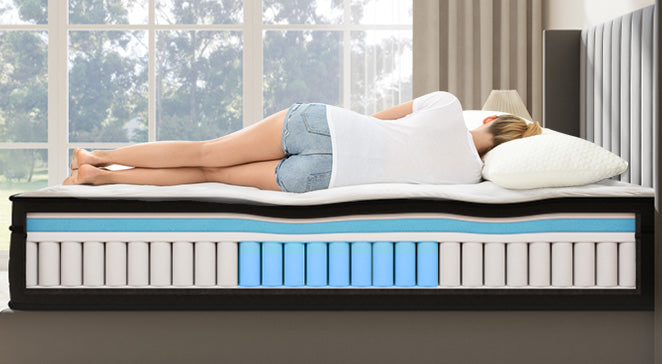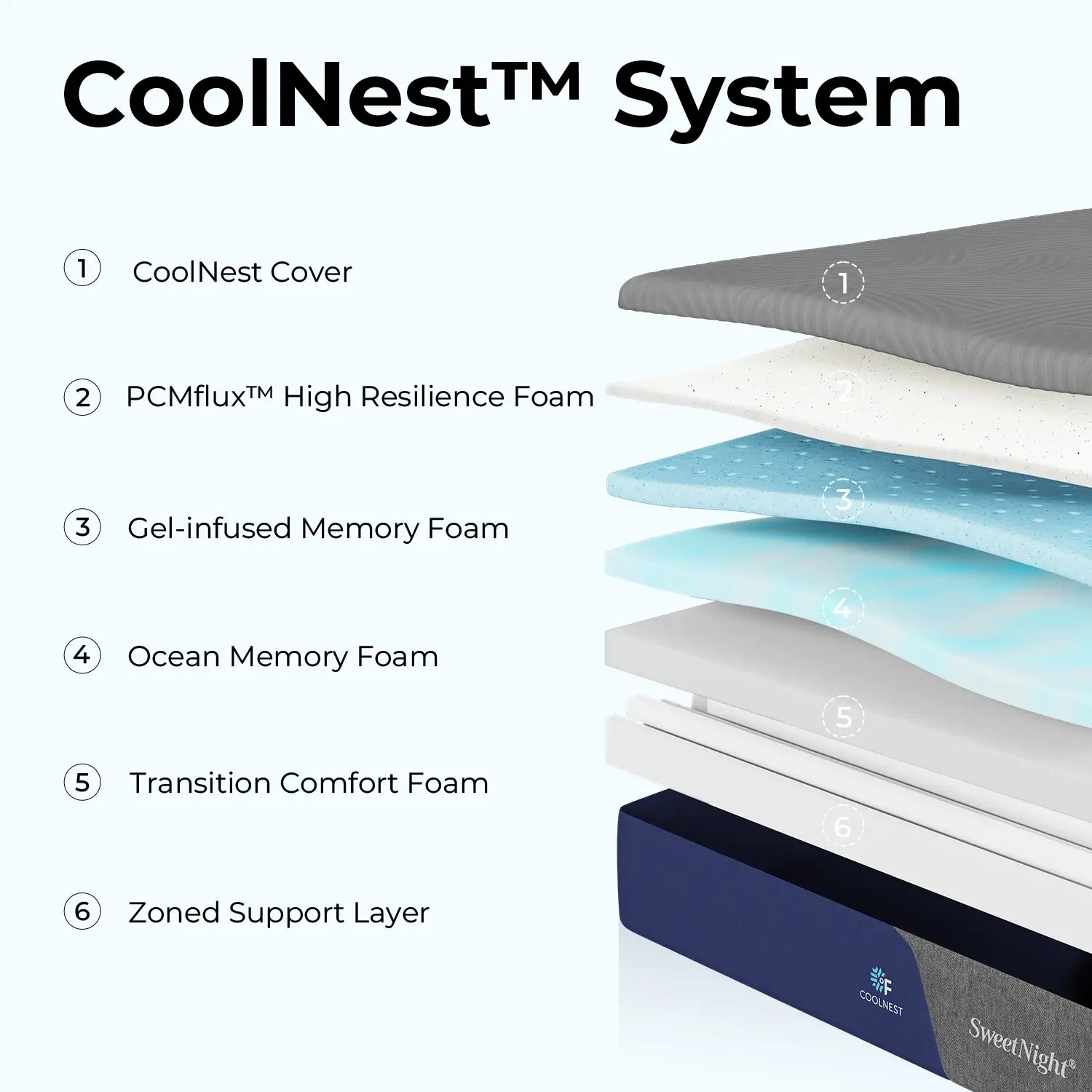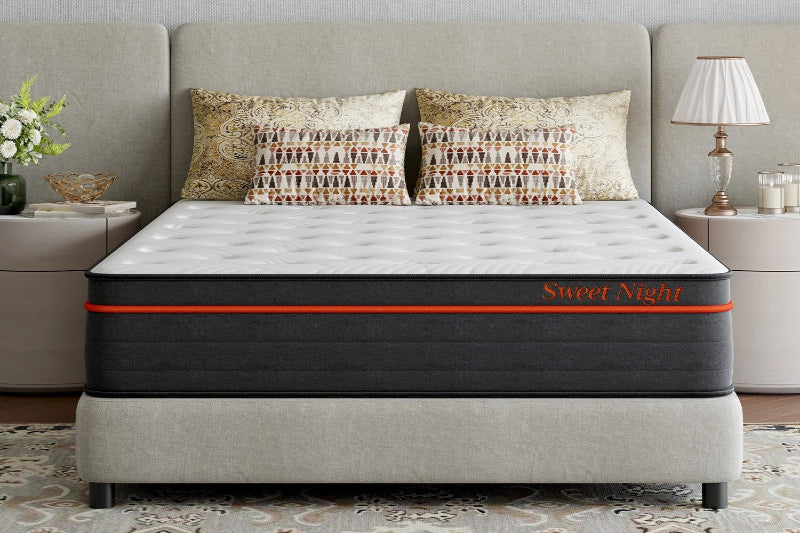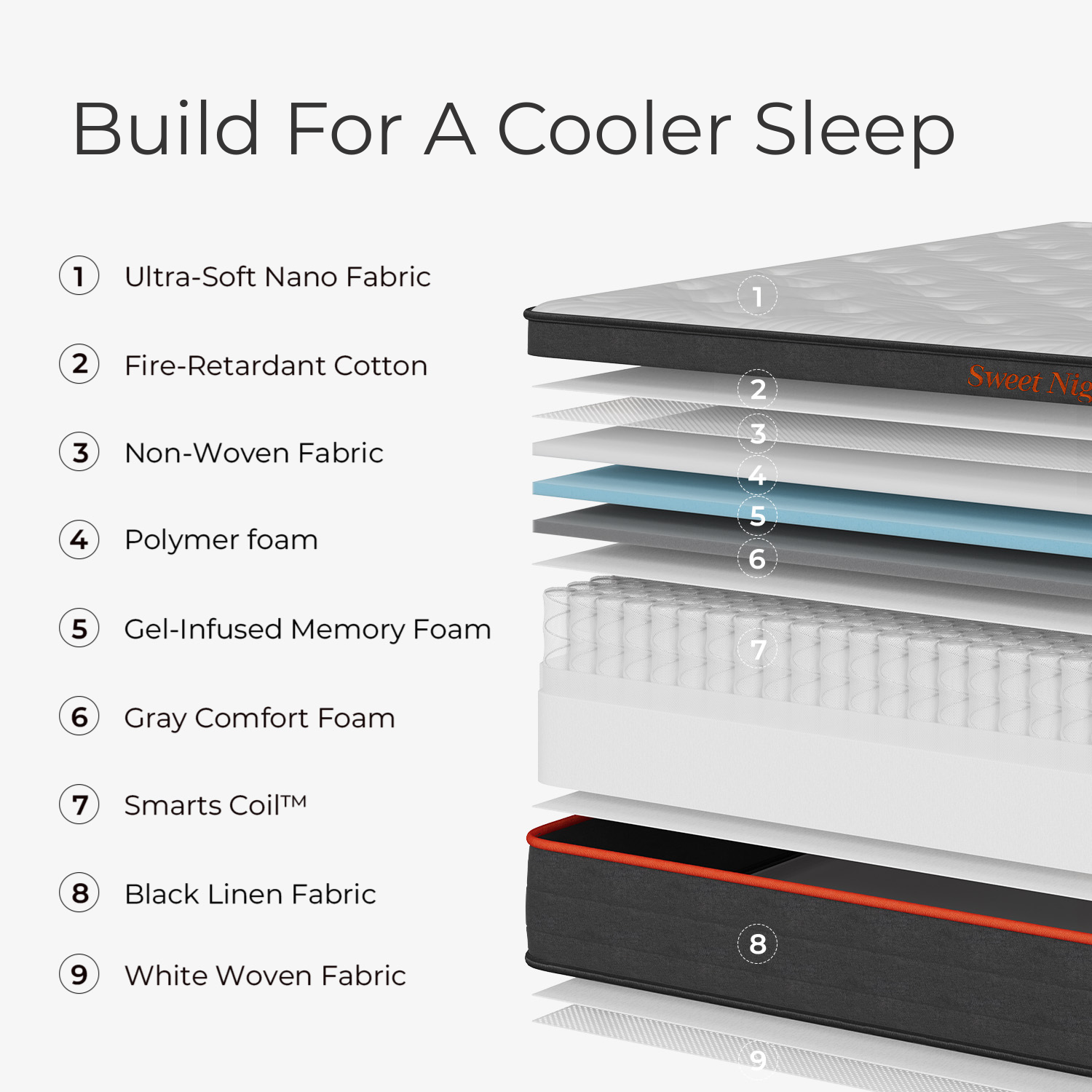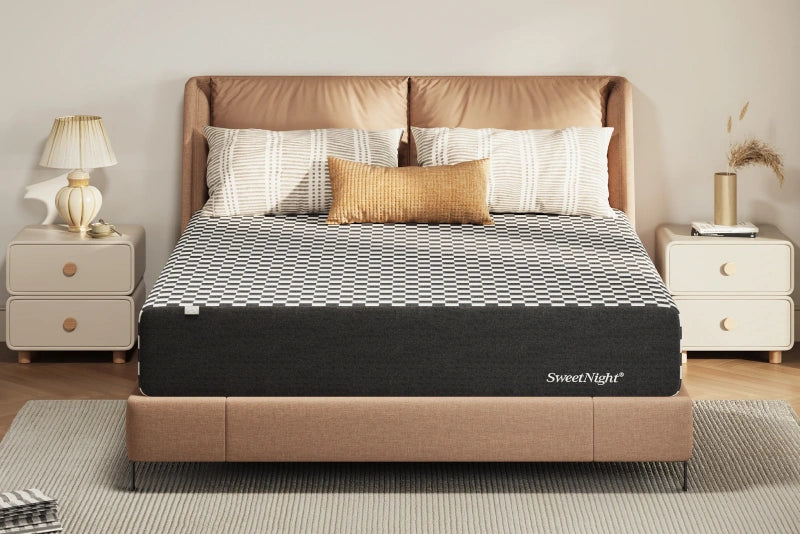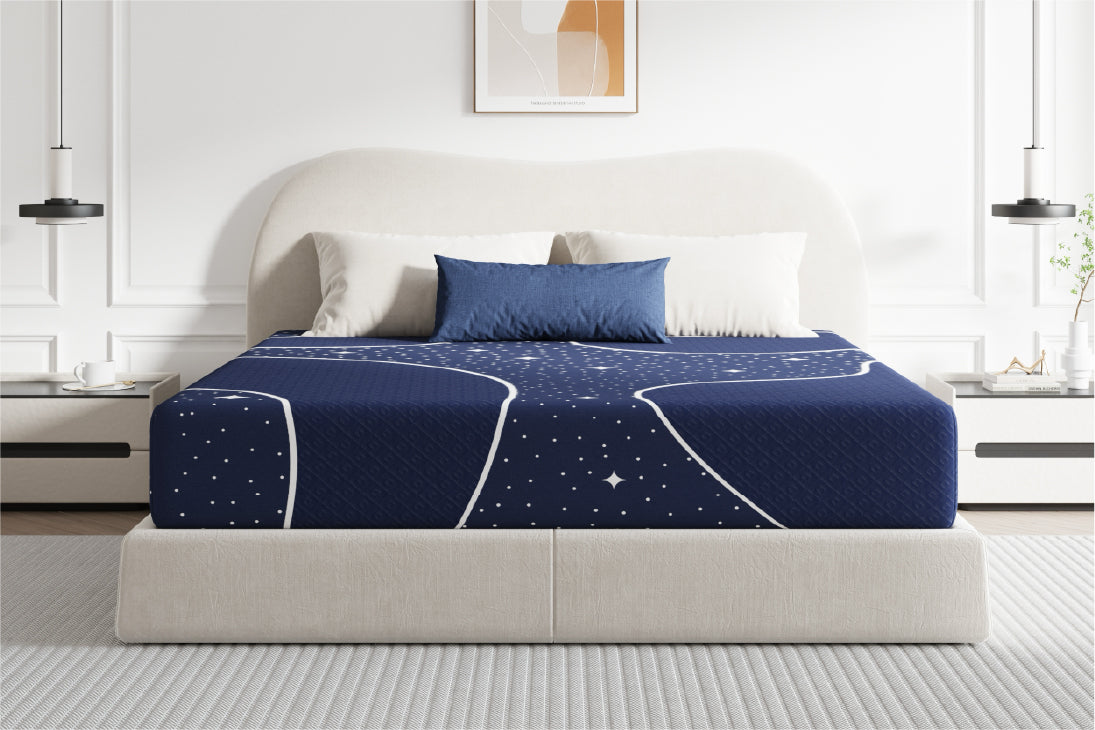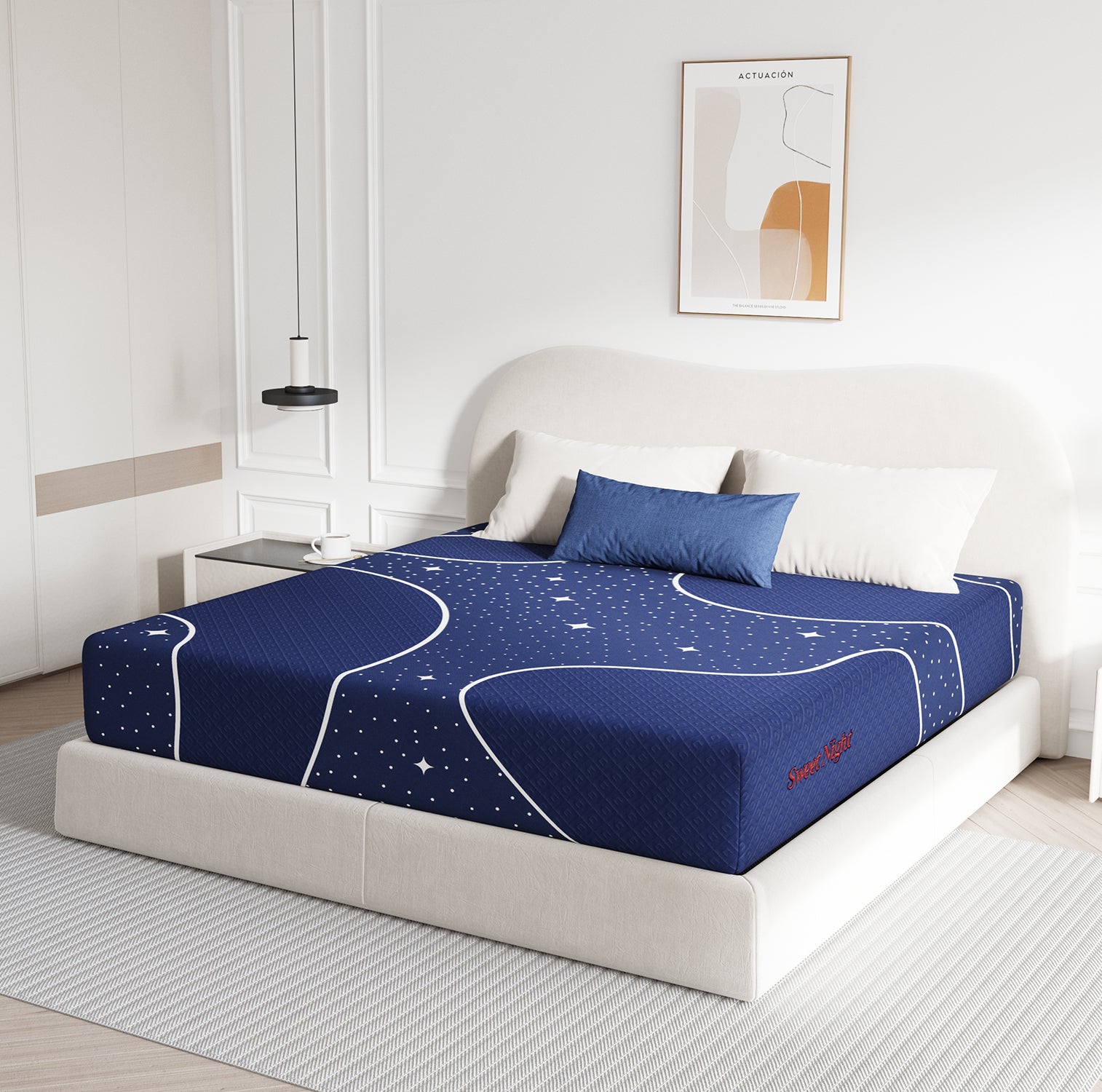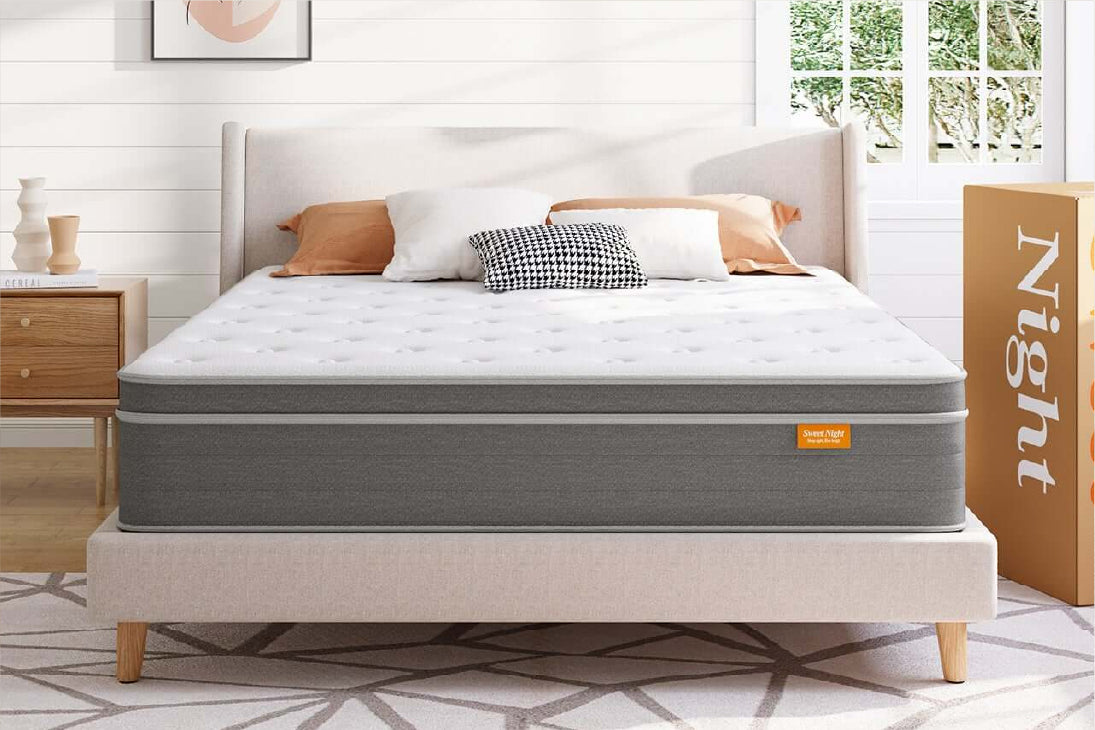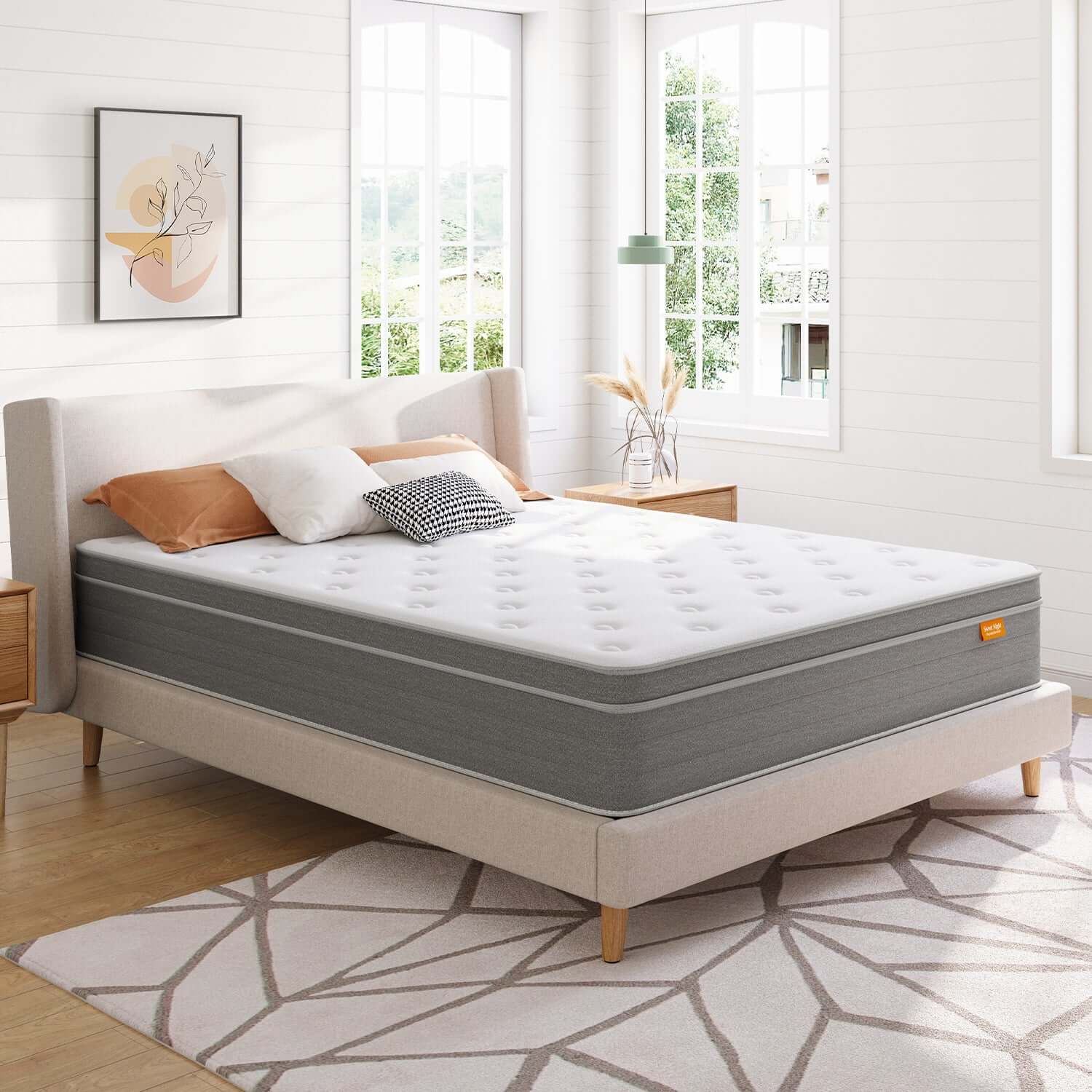Picking the best mattress for your platform bed doesn't have to be a nightmare. Whether you're a side sleeper with back pain or just tired of tossing and turning all night, the right mattress makes a huge difference. Platform beds give you solid support, but throw the wrong mattress on there and you'll regret it pretty quickly. Here's what you actually need to know to find something that'll help you sleep better.
Why Do Platform Beds Need Special Mattress Consideration?
Platform beds are different from traditional frames with box springs, and that difference affects how your mattress feels and performs. The solid or slatted base changes everything from firmness to airflow. Picking the wrong mattress can lead to problems like sagging, sleeping too hot, or just plain discomfort.
Platform Beds Provide Direct Support
Traditional beds use box springs to add cushioning and bounce underneath your mattress. Platform beds skip that layer entirely—your mattress sits right on the solid or slatted base. This firm foundation means softer mattresses will feel harder than you'd expect, so you need to factor that in when choosing your firmness level.
Airflow Works Differently
Platform beds don't let as much air circulate under your mattress compared to traditional frames. Slatted platforms help a bit, but solid platforms can trap heat. If you sleep hot, look for mattresses with cooling gel or breathable materials to make up for the reduced airflow.
Mattress Thickness Matters More
Without a box spring adding height, your mattress thickness becomes really important. Go too thin and you might feel the slats underneath. Go too thick and your mattress will stick way up above the bed frame.
Weight Distribution Changes
Platform beds spread your weight evenly across the mattress surface. That's great for support, but it means lower-quality mattresses will sag faster since they're not getting help from a box spring.
What Mattress Types Work Best for Platform Beds?
Not all mattresses work the same way on platform beds. Each type has different benefits and drawbacks depending on what you need. Here's a quick rundown of the three main options.
Hybrid Mattresses
Hybrid mattresses mix innerspring coils with foam or latex layers on top. They're probably your best bet for platform beds because you get support and comfort together. The coils let air flow through to keep you cool, and the foam layers relieve pressure.
Memory Foam Mattresses
Memory foam mattress molds to your body and takes pressure off your joints. These work well on platform beds since the solid base gives them good support. The problem is they can sleep hot, especially on solid platforms with poor airflow.
Innerspring Mattresses
Innerspring mattresses use metal coils with thin padding on top. They're the coolest option if you sleep hot. But they feel really firm on platform beds without a box spring underneath, and they don't cushion pressure points as well.
Best Hybrid Mattress for Side Sleepers
Side sleepers need mattresses that cushion their shoulders and hips while keeping their spine aligned. Hybrid mattresses excel at this because they combine the pressure relief of foam with the support of coils. The result is a mattress that contours to your body without letting you sink in too far.
What Makes Hybrid Mattresses Ideal for Side Sleepers
Hybrid mattresses work so well for side sleepers because of their layered design. Here's what makes them stand out:
- Foam cushioning on top: The foam layers cushion your shoulders and hips where most of your weight rests when sleeping on your side.
- Coil support underneath: The coil system keeps you from sinking too far, which prevents your spine from bending out of alignment.
- Air flows through coils: The coils let air circulate through the mattress, keeping you cooler than all-foam options that trap heat.
- Easy to change positions: The responsive feel lets you shift positions easily during the night without feeling stuck.
This combination of cushioning and support is exactly what side sleepers need to wake up without that achy feeling in their shoulders and hips.
Top Features to Look For
When shopping for a hybrid mattress as a side sleeper, knowing which features actually matter can save you time and money. Focus on these key elements:
- Different support zones: Look for mattresses with zones that target your shoulders, hips, and lower back separately for better pressure relief.
- Gel-infused foam on top: The top layers should include gel-infused memory foam for cooling and body contouring.
- Individually wrapped coils: These move independently and reduce motion transfer better than traditional innersprings, which matters if you share your bed.
- At least 2-3 inches of foam: The mattress needs enough memory or comfort foam on top to properly cushion your pressure points.
- Proper coil density: Check that the coils provide enough support without making the mattress too firm for side sleeping.
If you're looking for a hybrid that checks all these boxes, the Island Hybrid Mattress offers three-zoned support specifically designed for shoulders, hips, and lumbar areas, plus gel-infused memory foam for cooling comfort throughout the night.

Best Mattress for Back Pain Side Sleeper
Dealing with back pain as a side sleeper means you need a mattress that does more than just feel comfortable. You need proper support in the right places and enough cushioning to take pressure off your joints. The wrong mattress can make your pain worse, while the right one can actually help you wake up feeling better.
Pressure Point Relief for Side Sleepers
Side sleepers put most of their weight on their shoulders and hips, which creates pressure points that can lead to pain. Here's what to look for in a mattress that properly relieves these pressure points:
- Several foam layers: Look for mattresses with multiple foam layers that distribute your weight evenly instead of concentrating pressure on your shoulders and hips.
- Gel-infused memory foam: This material molds to your body while staying cool, so you get cushioning without overheating during the night.
- At least 2-3 inches of memory foam: The top comfort layer needs enough thickness to properly cushion your joints and take pressure off pain points.
- Cushioning without sinking: The foam should support your joints without letting you sink too deep, which throws off your spine alignment and creates more pain.
Getting this balance right means waking up with less pain in your shoulders, hips, and back.
Spinal Alignment Considerations
Your spine should stay in a neutral position when you sleep on your side—basically a straight line from your neck to your tailbone. Proper alignment is crucial for reducing and preventing back pain:
- Different support zones: Look for mattresses that provide firmer support under your hips and softer cushioning for your shoulders since they need different levels of support.
- Hip support: The mattress should keep your hips from sinking too far down, which would curve your spine unnaturally and cause pain.
- Shoulder cushioning: Your shoulders need adequate cushioning so they don't get compressed, which leads to upper back and neck pain.
- Multiple support areas: Pay attention to mattresses that mention ergonomic design or zoned support, as these are specifically built to keep your spine aligned.
When your spine stays aligned throughout the night, you'll notice a significant difference in how your back feels in the morning.
Firmness Levels for Back Pain Relief
Finding the right firmness level is critical for side sleepers dealing with back pain. Here's what you need to know:
- Medium firmness (5-6 out of 10): Most side sleepers with back pain need this firmness range to get both support and cushioning where they need it.
- Too soft causes problems: If the mattress is too soft, you'll sink in too far and your spine will curve unnaturally, making pain worse.
- Too firm hurts too: If it's too firm, your shoulders and hips won't get enough cushioning, creating new pressure point pain.
- Body weight matters: Heavier sleepers typically need slightly firmer mattresses for proper support, while lighter sleepers do better with softer options.
- Balance hip support and shoulder cushioning: The mattress needs to hold your hips up while still letting your shoulders sink in enough to keep your spine straight.
If you're looking for a mattress that addresses all these pain points, the SweetNight CoolNestTM Mattress might be worth checking out. It has a 5-zone support system that targets different pressure areas from your head to your toes, and it's actually endorsed by the American Chiropractic Association. The multiple support zones are designed specifically to help with the kind of alignment issues that make back pain worse for side sleepers.
Key Factors When Choosing Your Platform Bed Mattress
Picking the right mattress for your platform bed involves more than just choosing between foam or hybrid. Several specific factors affect how well your mattress performs on a platform base and how comfortable you'll be long-term. Here's what you need to pay attention to before making your purchase.
How Thick Should Your Mattress Be?
Mattress thickness matters more on platform beds since there's no box spring adding extra height. Here's how different thickness levels work with platform beds:
| Thickness | Best For | Considerations |
| Under 10 inches | Budget options, low-profile beds | May feel the slats underneath; harder to get in/out of bed |
| 10-12 inches | Standard platform beds with lower rails | Balanced height; works with most platform designs |
| 12-14 inches | Platform beds with higher side rails | Optimal comfort; may extend above lower rails |
| Over 14 inches | Luxury feel preferences | Can look bulky; difficult to tuck sheets; may overwhelm bed frame |
Go too thin and you might feel the slats underneath, especially if you're a heavier sleeper. Go too thick and your mattress will extend way above the side rails, making it look awkward and creating issues with fitted sheets.
How Firm Should Your Mattress Feel?
Mattress firmness is rated on a scale from 1 to 10, with 1 being super soft and 10 being rock hard. Finding the right level depends on your sleeping position and body weight:
| Sleep Position | Firmness Level | Why It Works |
| Side Sleepers | 5-6 (Medium) | Need enough cushioning for shoulders and hips without sinking too far into the mattress |
| Back Sleepers | 6-7 (Medium-Firm) | Require proper spinal support while maintaining the natural curve of the lower back |
| Stomach Sleepers | 7-8 (Firm) | Need firmer support to prevent hips from sagging and causing lower back pain |
| Combination Sleepers | 5-7 (Medium to Medium-Firm) | Best versatility if you switch positions frequently during the night |
The solid base makes mattresses feel slightly firmer, so if you're between two levels, consider going softer. Your body weight also matters—heavier sleepers need firmer mattresses for adequate support, while lighter sleepers do better with softer options.
What Keeps Your Mattress Cool?
Platform beds don't allow as much airflow under your mattress as traditional frames, which can lead to heat buildup. Here are the key cooling features to look for:
1. Gel-Infused Memory Foam: Gel particles absorb and dissipate body heat more effectively than regular foam, keeping you cooler throughout the night.
2. Phase Change Materials (PCM): PCM technology actively regulates temperature by absorbing heat when you're too warm and releasing it when you cool down.
3. Breathable Cover Design: Look for 3D weaving, knit fabrics with air channels, or covers with thousands of micro-vents that increase airflow across the surface.
4. Coil Systems in Hybrids: Hybrid mattresses naturally sleep cooler because the coil layers create air channels that let heat escape.
5. Moisture-Wicking Fabrics: Covers with moisture-wicking properties pull sweat away from your body, keeping you dry and comfortable.
If you're a hot sleeper, prioritize mattresses that feature cooling technology in multiple layers, not just the cover.

What to Look for in Mattress Materials
Material quality directly affects how long your mattress lasts and whether it's safe for your health. Here's what to verify before buying:
| Certification/Feature | What It Means | Why It Matters |
| CertiPUR-US | Foam is free from harmful chemicals, formaldehyde, heavy metals, and certain flame retardants | Ensures safe breathing environment for 7-9 hours nightly |
| OEKO-TEX Standard 100 | Fabric cover is tested and free from harmful substances | Safe for direct skin contact throughout the night |
| High-Density Foam (40-70 range) | Denser foam structure that resists compression | Prevents sagging and maintains support longer on platform beds |
| Fiberglass-Free | No fiberglass materials used in construction | Eliminates health risks if cover gets damaged |
High-density foam is especially important on platform beds where your mattress gets no help from a box spring. Quality mattresses with proper certifications cost more upfront but last longer and protect your health. Always check that the manufacturer explicitly lists these certifications—it's worth the investment for both durability and peace of mind.
How Do You Test Your Mattress After Delivery?
Getting your mattress delivered is just the start—you need to test it properly over the next few weeks to make sure it's right for you. Here's how to evaluate your new mattress during the trial period.
1. Let It Expand Fully First: Unbox your mattress and place it on your platform bed frame. Leave it untouched for 24-48 hours so it can fully expand. Open windows or turn on a fan to air out any packaging smell. Don't sleep on it during this time—it needs to settle.
2. Give Your Body Time to Adjust: Sleep on it every night during this period; don't switch back to your old mattress, even if it feels strange at first. Use your normal pillows and bedding to fairly judge the mattress.
3. Track How You Feel Each Morning: Pay attention to how your body feels when you wake up each day. Note any changes—less back pain, fewer sore shoulders, better sleep quality. After three weeks, compare your notes from week one to week three; that's when you'll see real patterns.
4. Test Your Normal Sleep Positions: Lie down in your most common position for at least 15-20 minutes each night. Side sleepers should check if shoulders sink in the right amount. Back sleepers should feel for lower back support. Stomach sleepers should notice if hips stay level. Try all your usual positions throughout the night.
5. Check for Pressure Point Relief: Press your hand into the mattress where your shoulders and hips normally rest—notice how deep it sinks and how quickly it bounces back. Then lie down and pay attention to any soreness after 20-30 minutes. Move slightly to redistribute pressure; if discomfort stays, that's a problem.
6. Test Edge Support and Movement: Sit on the very edge and lean your weight forward—stand up and sit down several times. Lie down within 6 inches of the edge; you shouldn't feel like you're rolling off. If you have a partner, have them move around while you're lying still to check motion transfer.
7. Watch for Signs It's Not Working: After 30 days, check for visible sagging or body impressions—measure any indentations with a ruler. Anything over 1 inch is a red flag. Pay attention to new pain, worse sleep quality, overheating, or feeling stuck when moving. These are signs the mattress isn't working for you.
Picking the Best Mattress for Your Platform Bed
Choosing the best mattress for platform bed gets easier once you focus on what actually matters—thickness between 10-14 inches, the right firmness for how you sleep, and quality materials that'll last. If you're a back pain side sleeper, go for medium firmness with zoned support. Don't skip the sleep trial—give yourself at least a month to adjust and see how you really feel. Your sleep quality depends on making the right choice, so use all the info you've learned here to find your perfect match.

